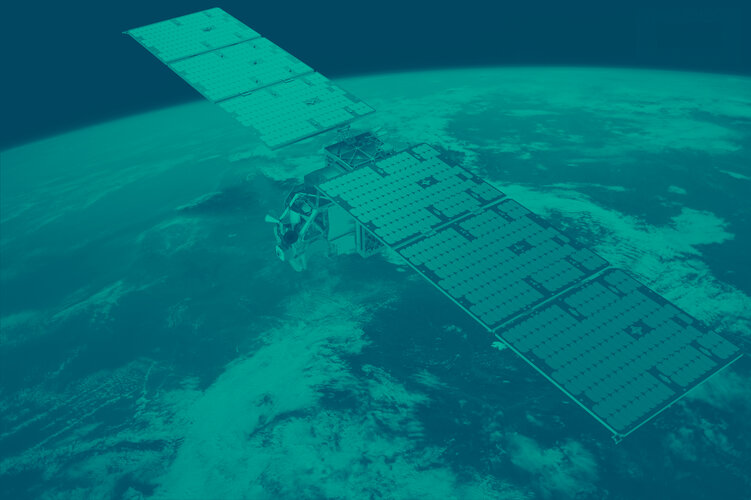Operations and data flow
Satellite operations, data downlink to Earth along with data processing and distribution is carried out through the ground segment. This comprises three main elements: the ground station, the payload data ground segment for processing and distributing the data, and the monitoring and control segment for operating the satellite.
The ground station is based at Svalbard in Norway, and has three main functions: receive data from the satellite, receive telemetry and transmit telecommands. It uses Digital Beam Forming Network (DBFN) technology for data downlink. This allows several satellites to be tracked simultaneously electronically (no moving parts) from a single antenna array. The telecommand and telemetry link uses a traditional dish antenna for the satellite.
The instrument data ground segment processes the science data starting from instrument source packets up to Level-1b (calibrated and geolocated radiances) and distributes the data to Eumetsat’s EUMETCast system, from where it will be distributed to end users.

The monitoring and control segment takes care of basic satellite operations and monitoring, and carries out mission planning for ground station visibility and communication. It also performs the satellite orbit maintenance planning, and collision avoidance manoeuvre planning.
There are two different data streams available. The Direct Data Broadcast (DDB) downlink permanently transmits realtime measurement data. This allows local and regional users to acquire realtime data as the satellite passes overhead.
The stored mission data are downlinked once per orbit to the Svalbard ground station. The data are then processed from raw data up to Level-1b and delivered to Eumetsat’s EUMETCast system. The data are then be disseminated to the end users. This data flow process occurs within 110 minutes.
The main data products are water-vapour profiles in clear and cloudy conditions; temperature profiles in clear and cloudy conditions; information on cloud ice and ground emissivity; sharp gradients in the atmospheric water vapour profiles. It is also expected that the mission data will be used for precipitation products.
Back to Arctic Weather Satellite homepage |















 Germany
Germany
 Austria
Austria
 Belgium
Belgium
 Denmark
Denmark
 Spain
Spain
 Estonia
Estonia
 Finland
Finland
 France
France
 Greece
Greece
 Hungary
Hungary
 Ireland
Ireland
 Italy
Italy
 Luxembourg
Luxembourg
 Norway
Norway
 The Netherlands
The Netherlands
 Poland
Poland
 Portugal
Portugal
 Czechia
Czechia
 Romania
Romania
 United Kingdom
United Kingdom
 Slovenia
Slovenia
 Sweden
Sweden
 Switzerland
Switzerland





























